This document provides an overview and introduction to NoSQL databases. It begins with an agenda that explores key-value, document, column family, and graph databases. For each type, 1-2 specific databases are discussed in more detail, including their origins, features, and use cases. Key databases mentioned include Voldemort, CouchDB, MongoDB, HBase, Cassandra, and Neo4j. The document concludes with references for further reading on NoSQL databases and related topics.
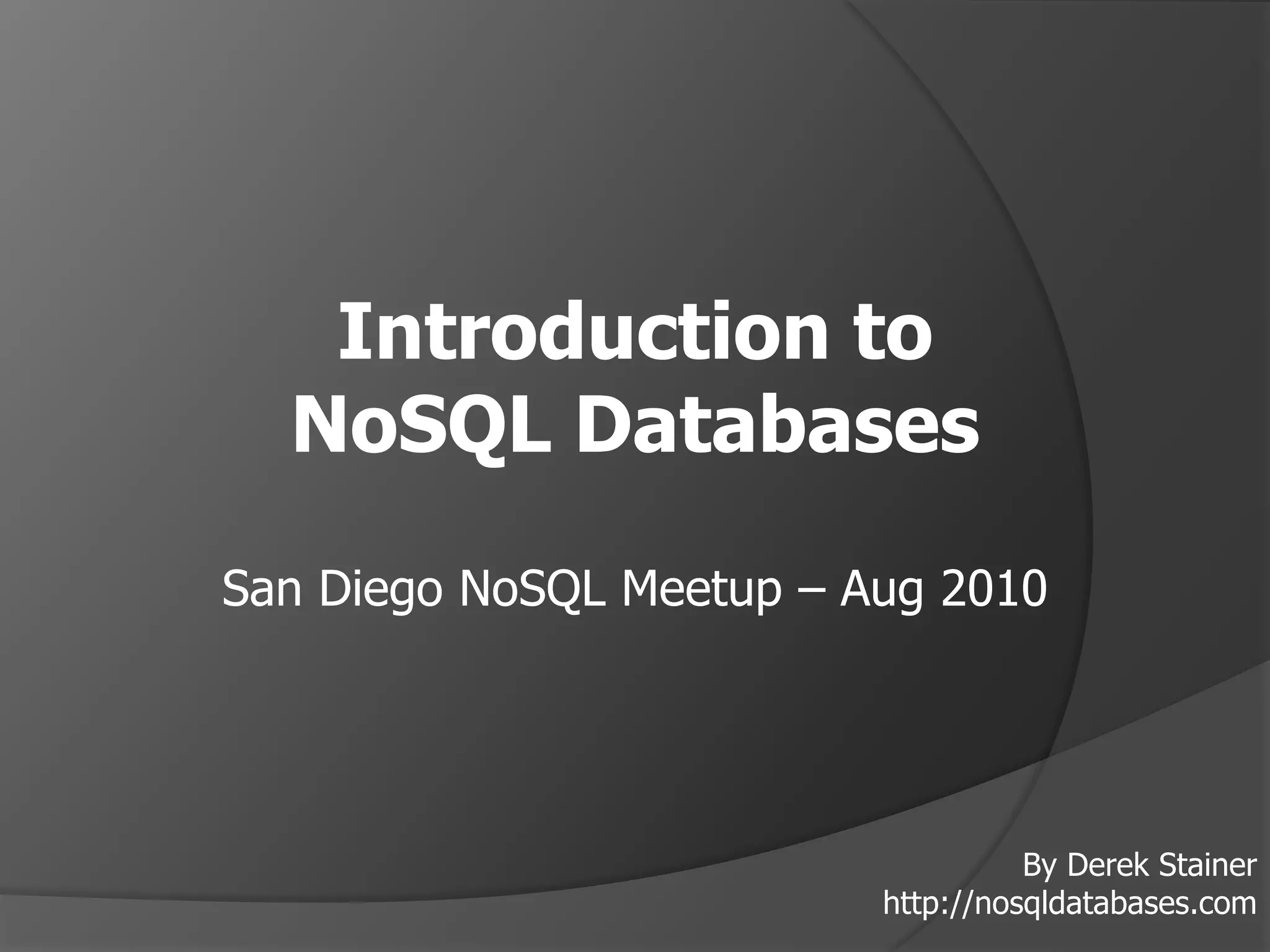
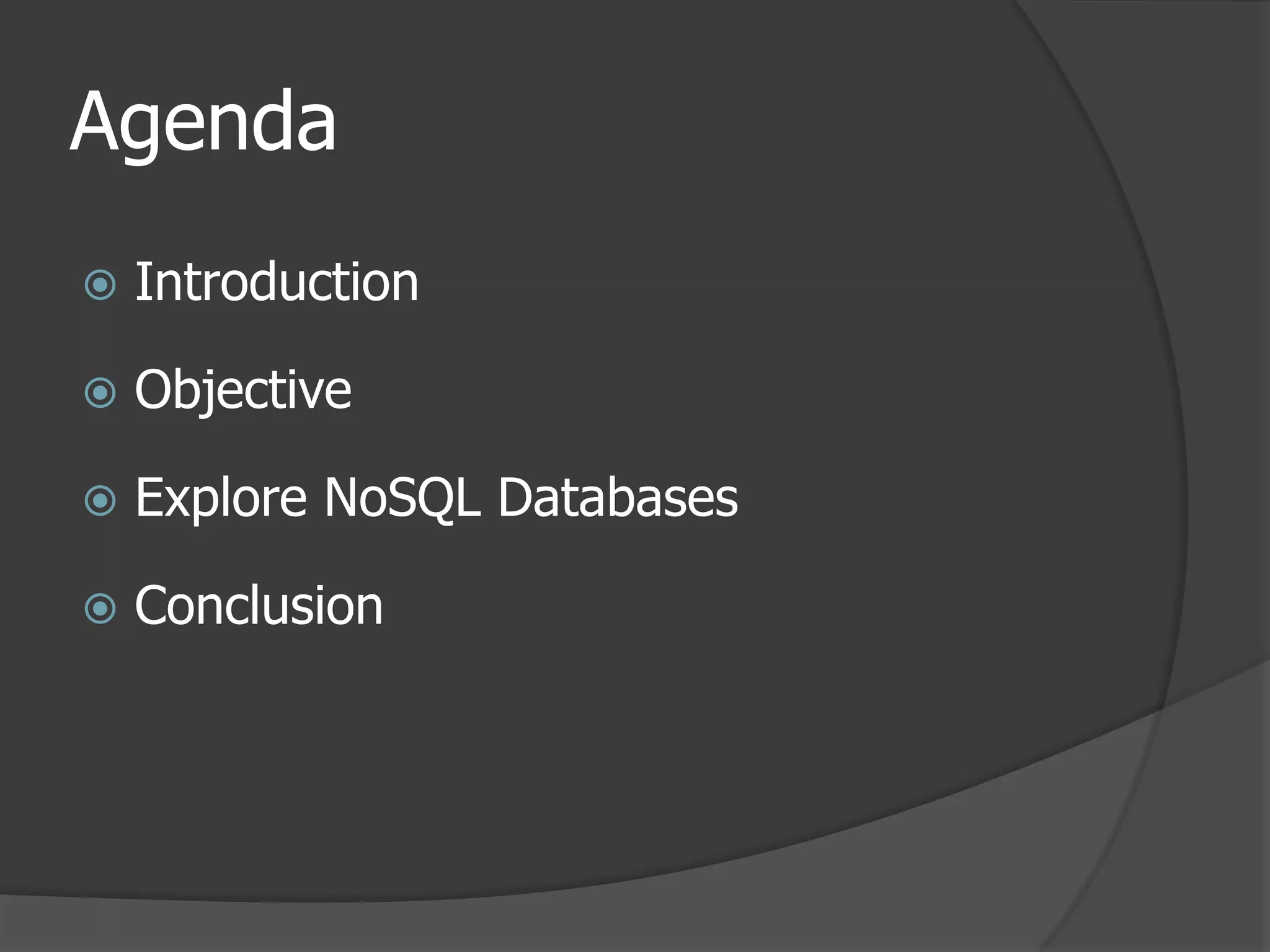
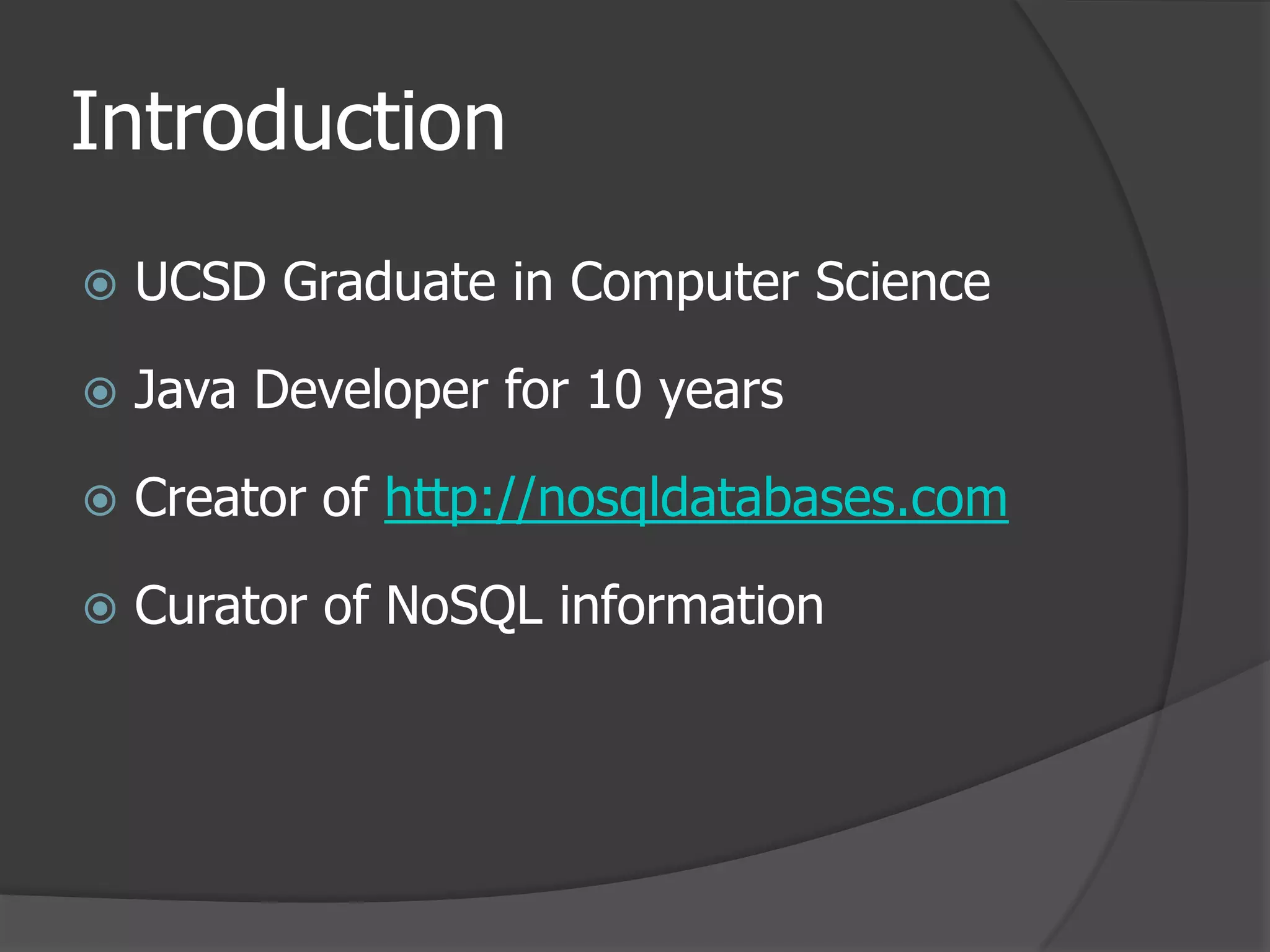
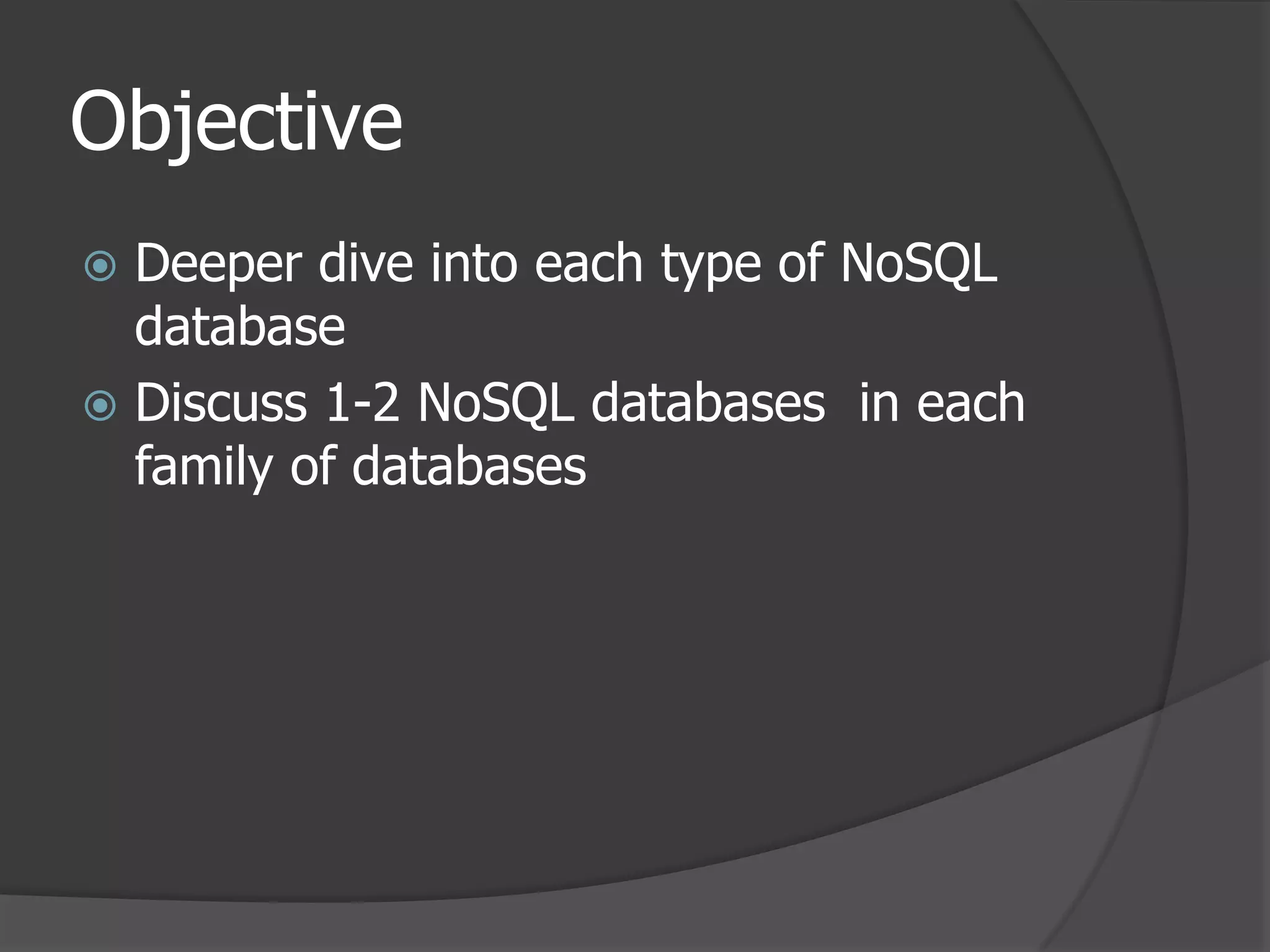
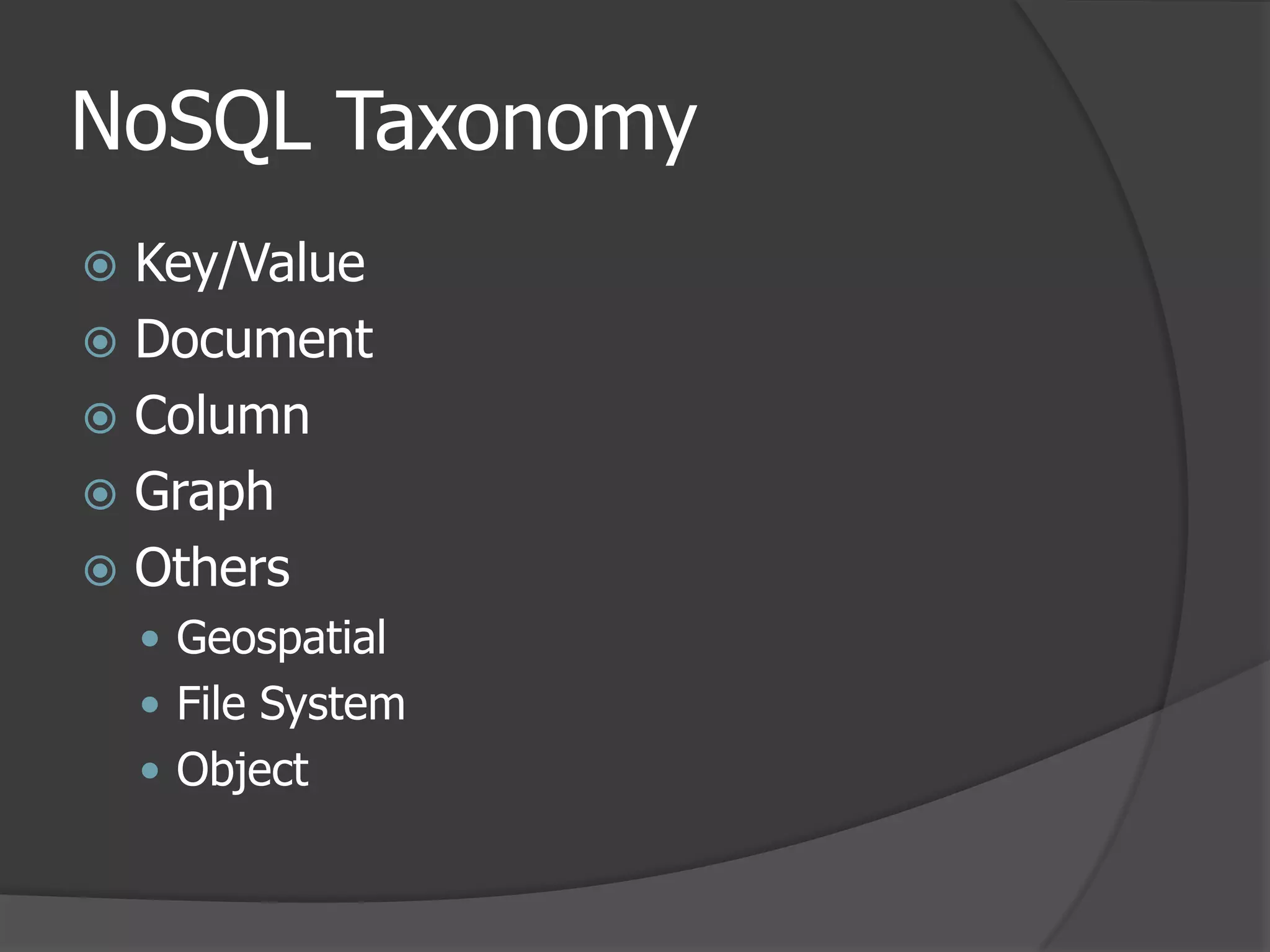
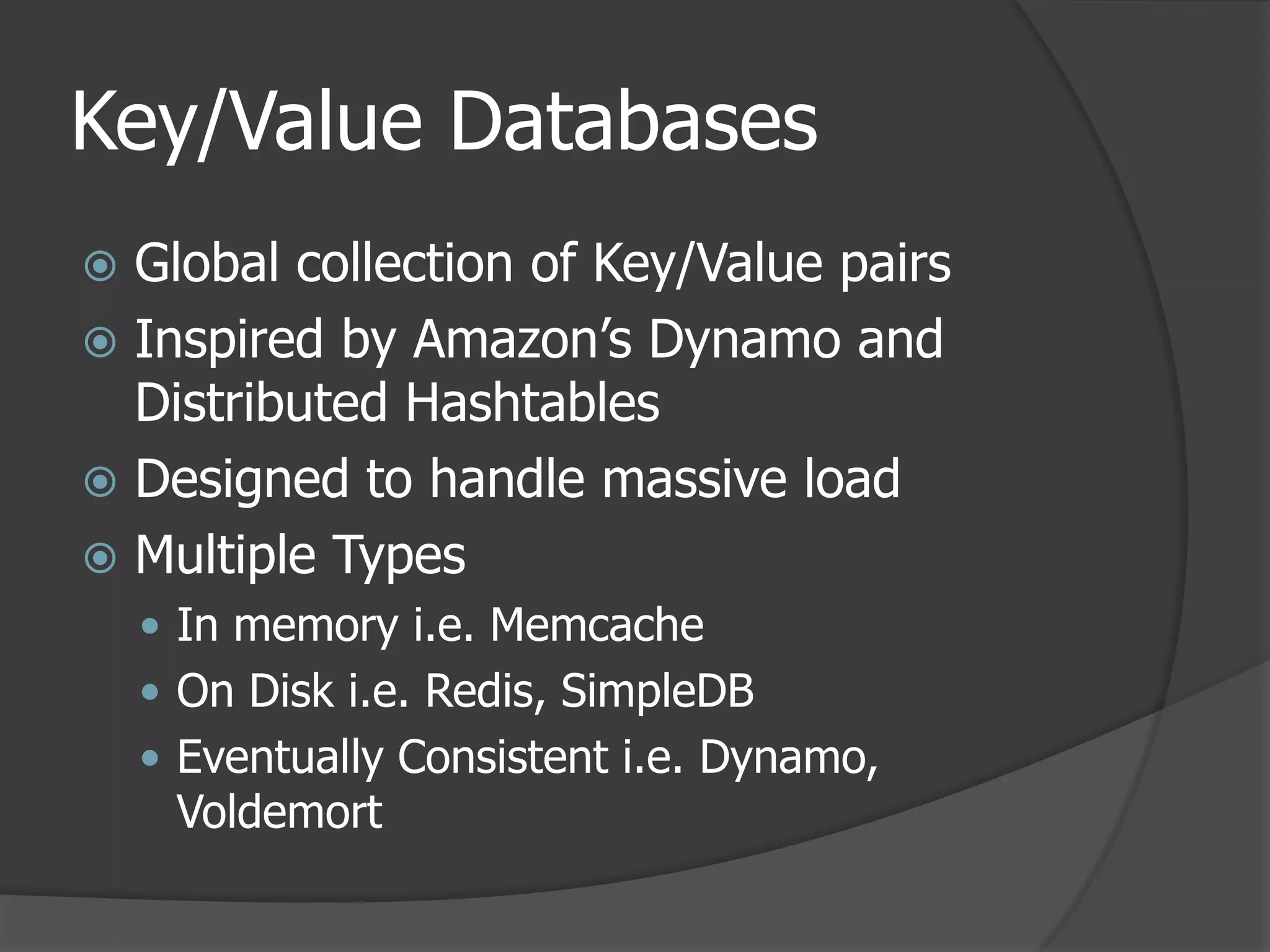
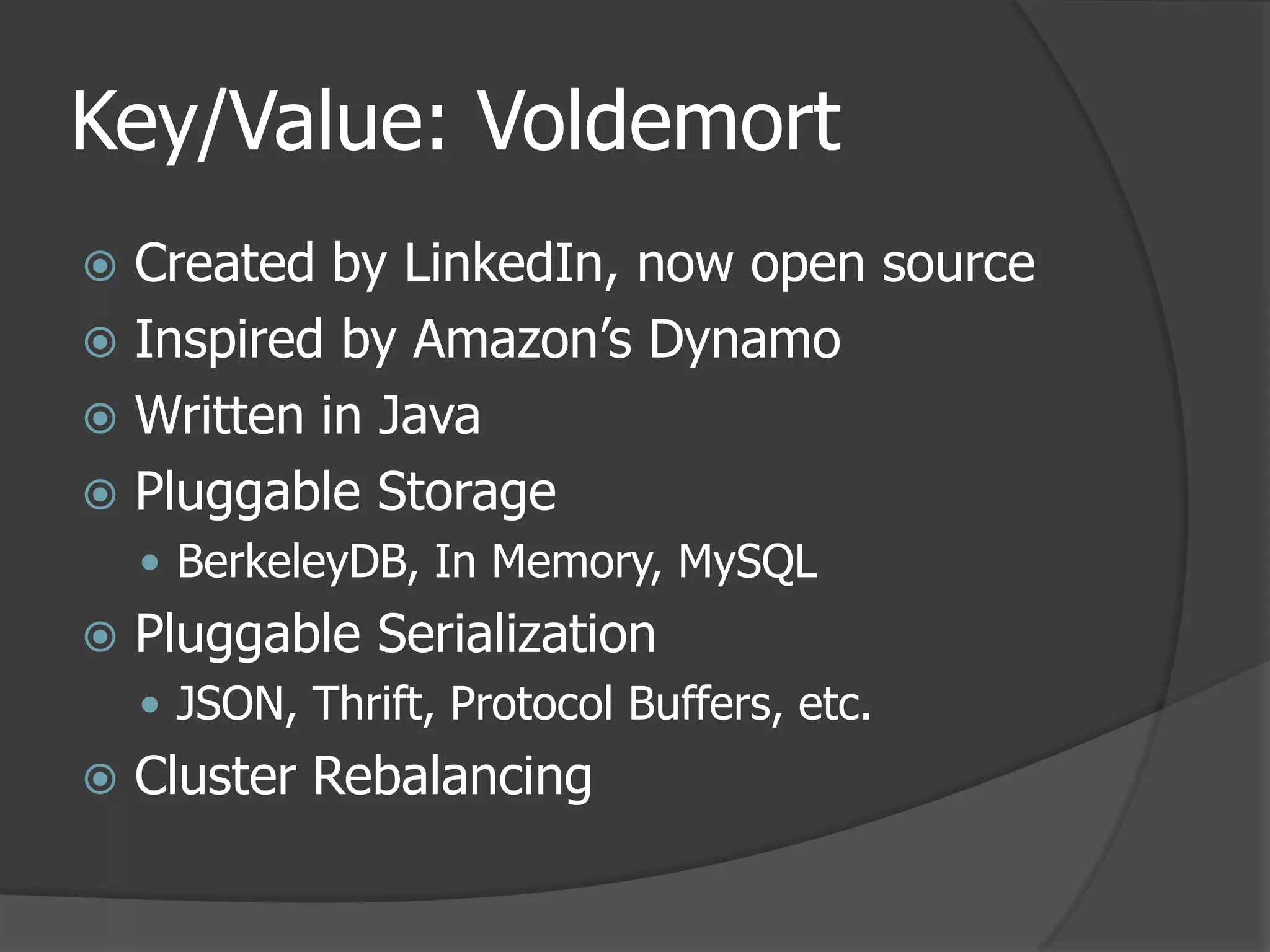
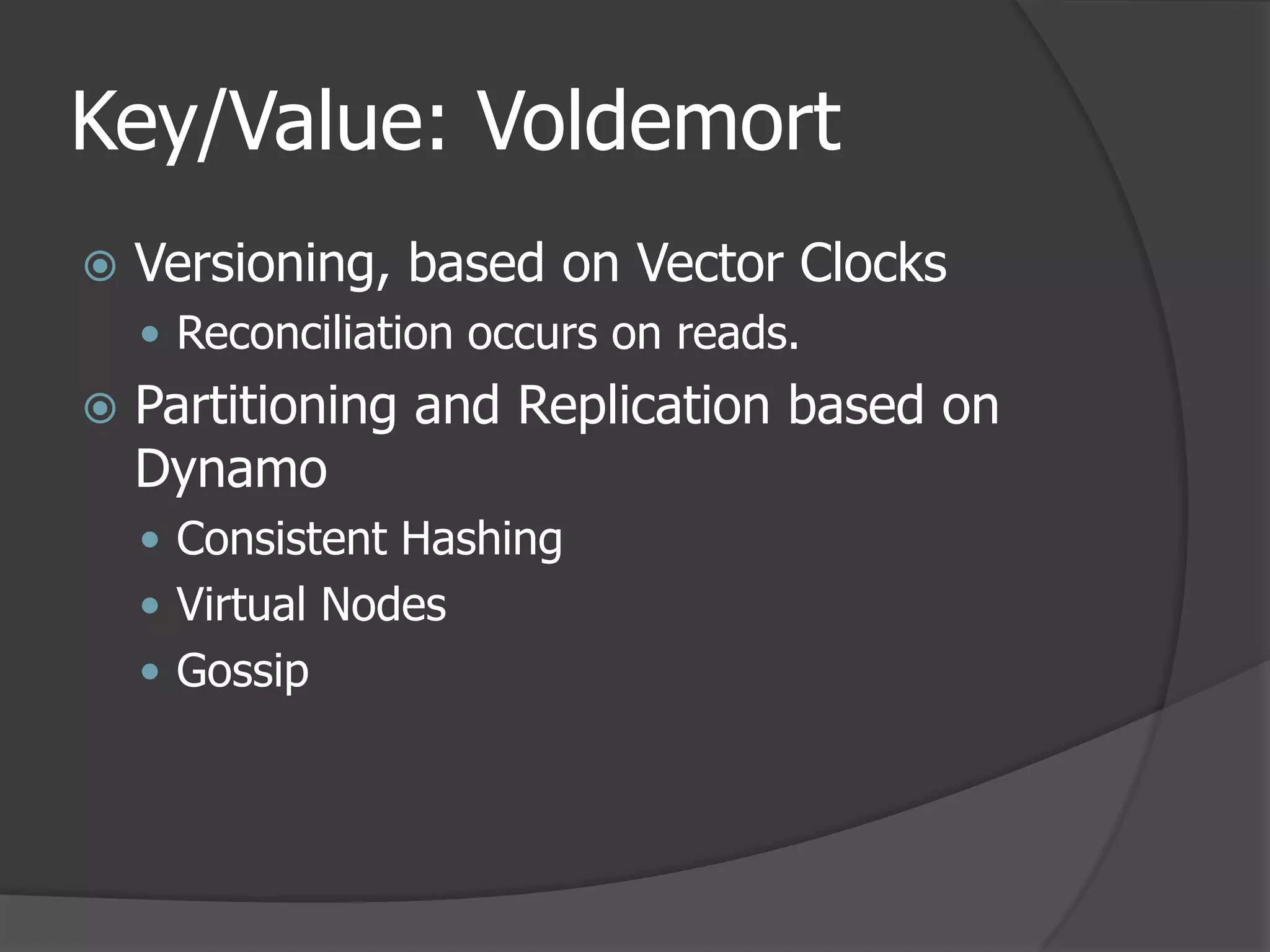
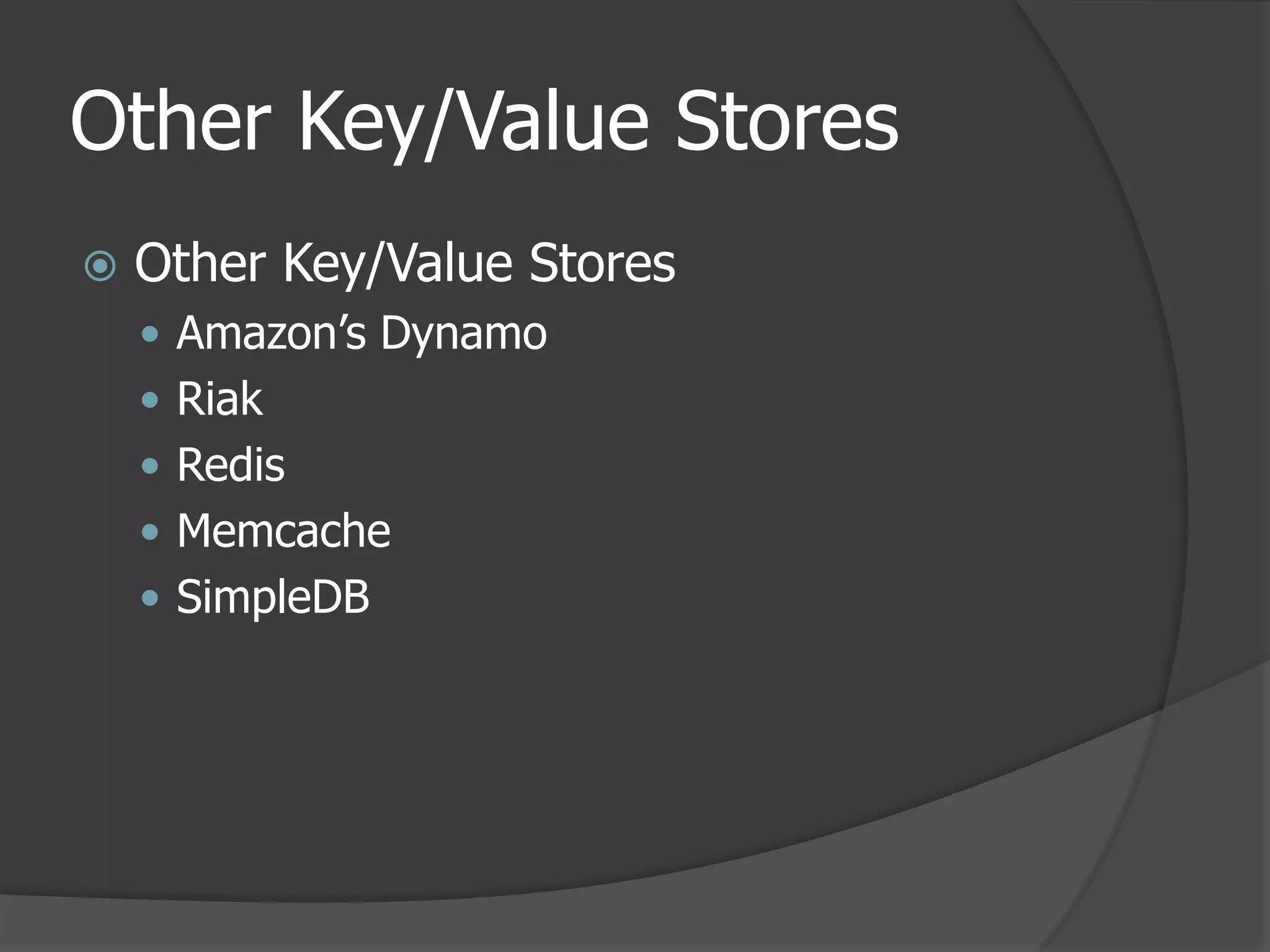
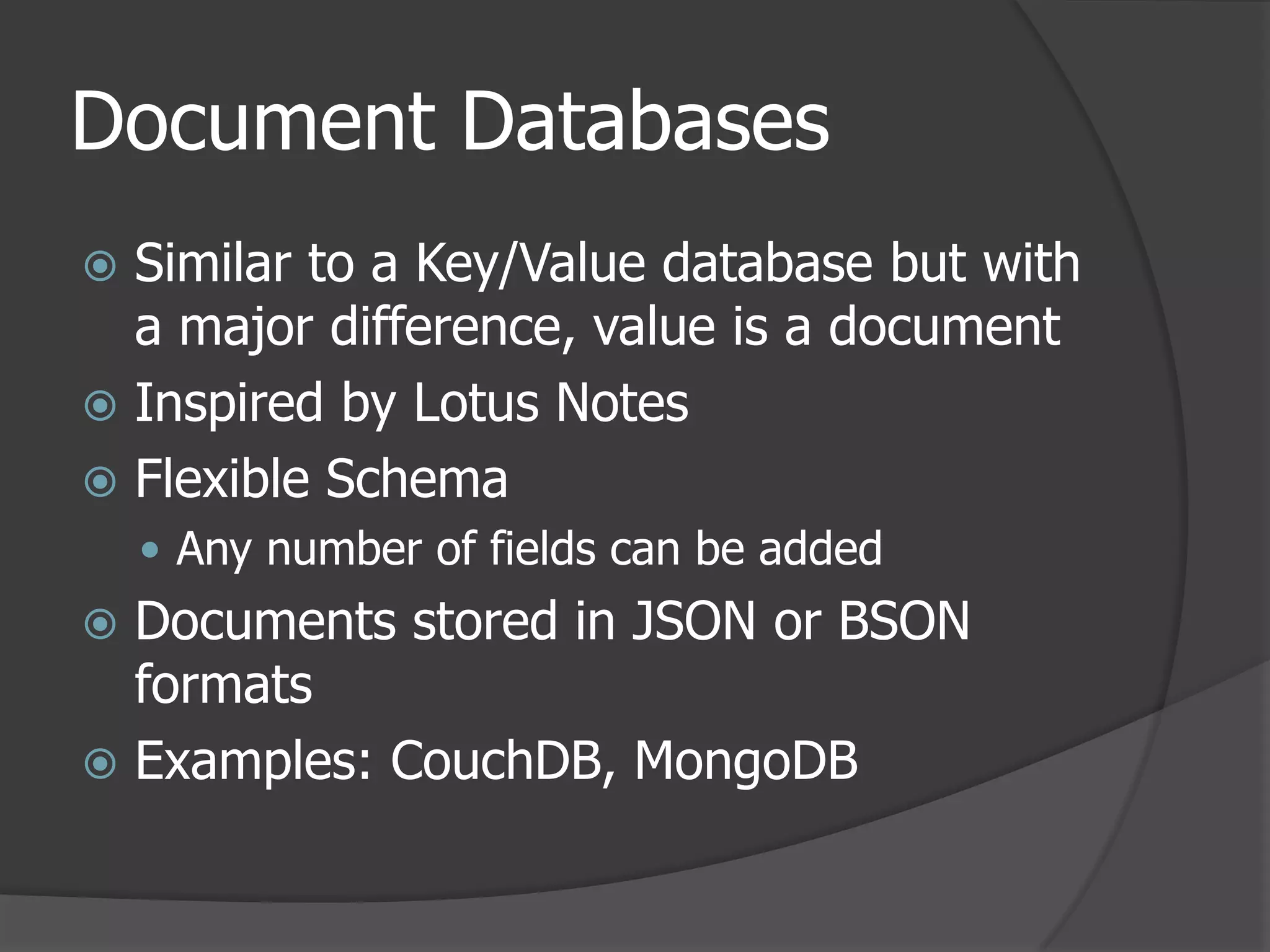
![Sample Document{ "day": [ 2010, 01, 23 ], "products": { "apple": { "price": 10 "quantity": 6 }, "kiwi": { "price": 20 "quantity": 2 } }, "checkout": 100 }](https://image.slidesharecdn.com/introductiontonosqldatabases-100805013044-phpapp02/75/Introduction-to-NoSQL-Databases-11-2048.jpg)
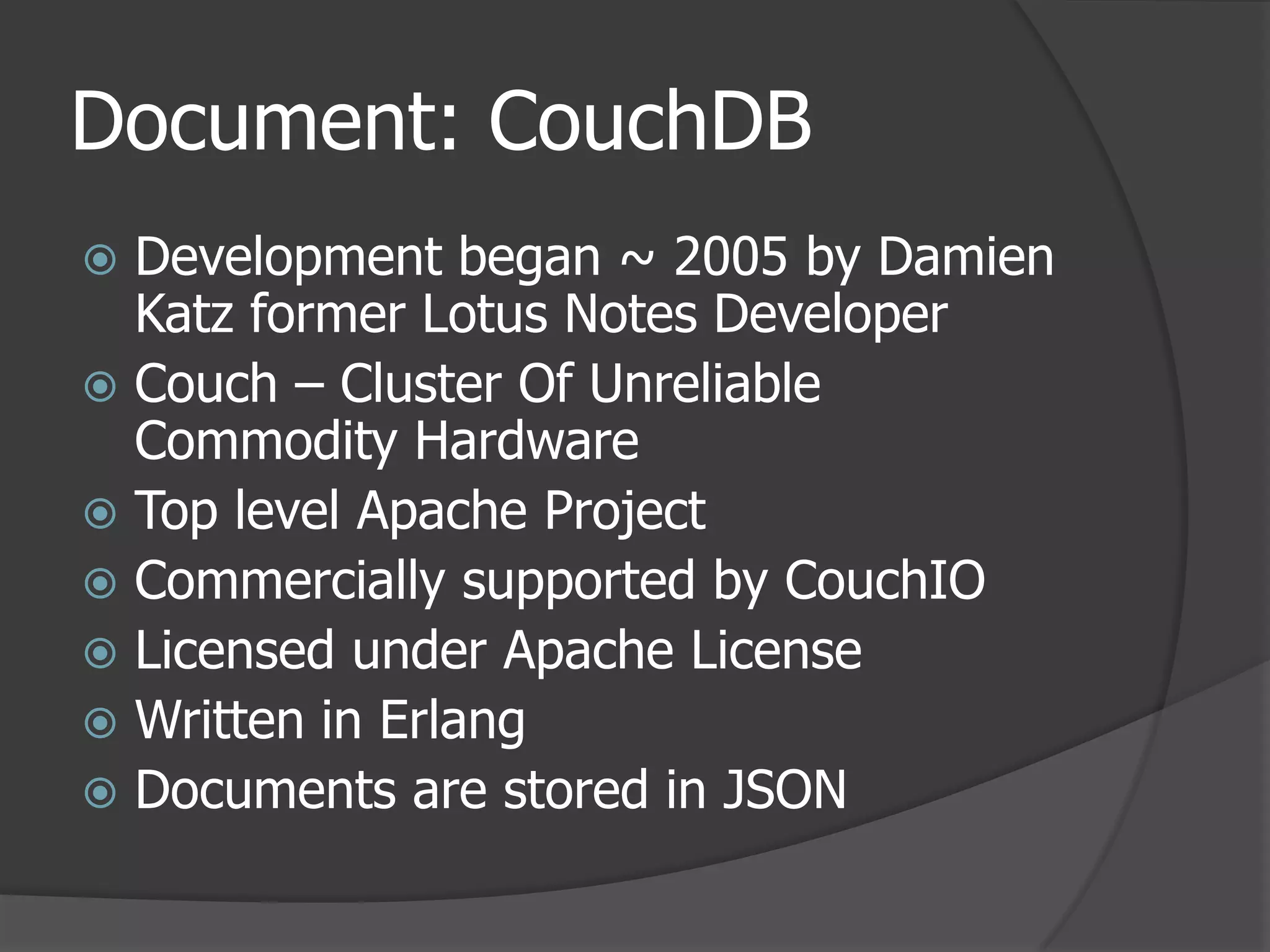
![Document: CouchDB [cont’d]B-Tree Storage EngineMVCC model, no locking No joins, primary key or foreign key (UUIDs are auto assigned) Built bi-directional replicationCan even run offline, come back and sync back changesCustom persistent views using MapReduceREST API](https://image.slidesharecdn.com/introductiontonosqldatabases-100805013044-phpapp02/75/Introduction-to-NoSQL-Databases-13-2048.jpg)
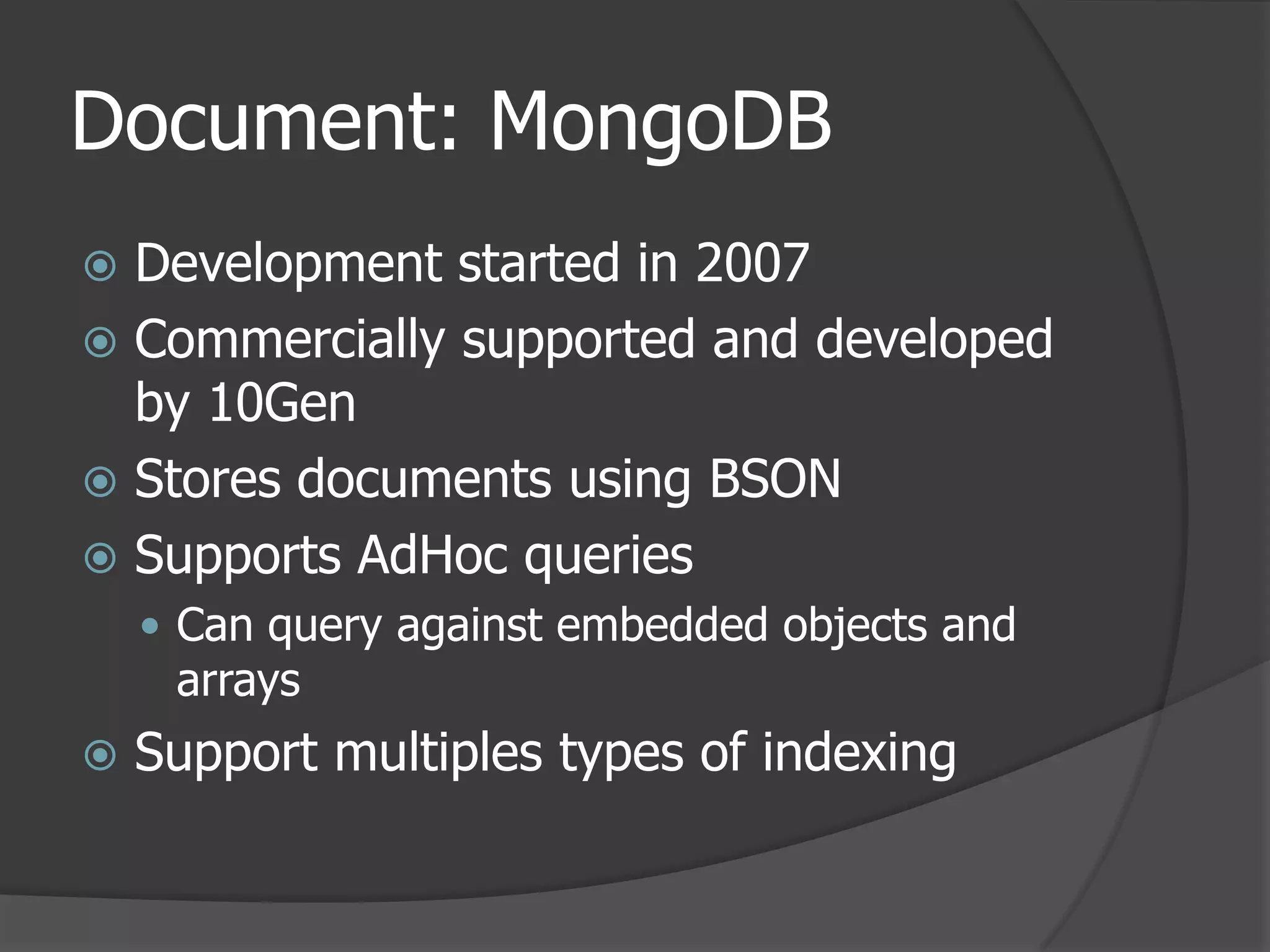
![Document: MongoDB [cont’d]Officially supported drivers available for multiple languagesC, C++, Java, Javascript, Perl, PHP, Python and RubyCommunity supported drivers include:Scala, Node.js, Haskell, Erlang, SmalltalkReplication uses a master/slave modelScales horizontally via shardingWritten C++](https://image.slidesharecdn.com/introductiontonosqldatabases-100805013044-phpapp02/75/Introduction-to-NoSQL-Databases-15-2048.jpg)
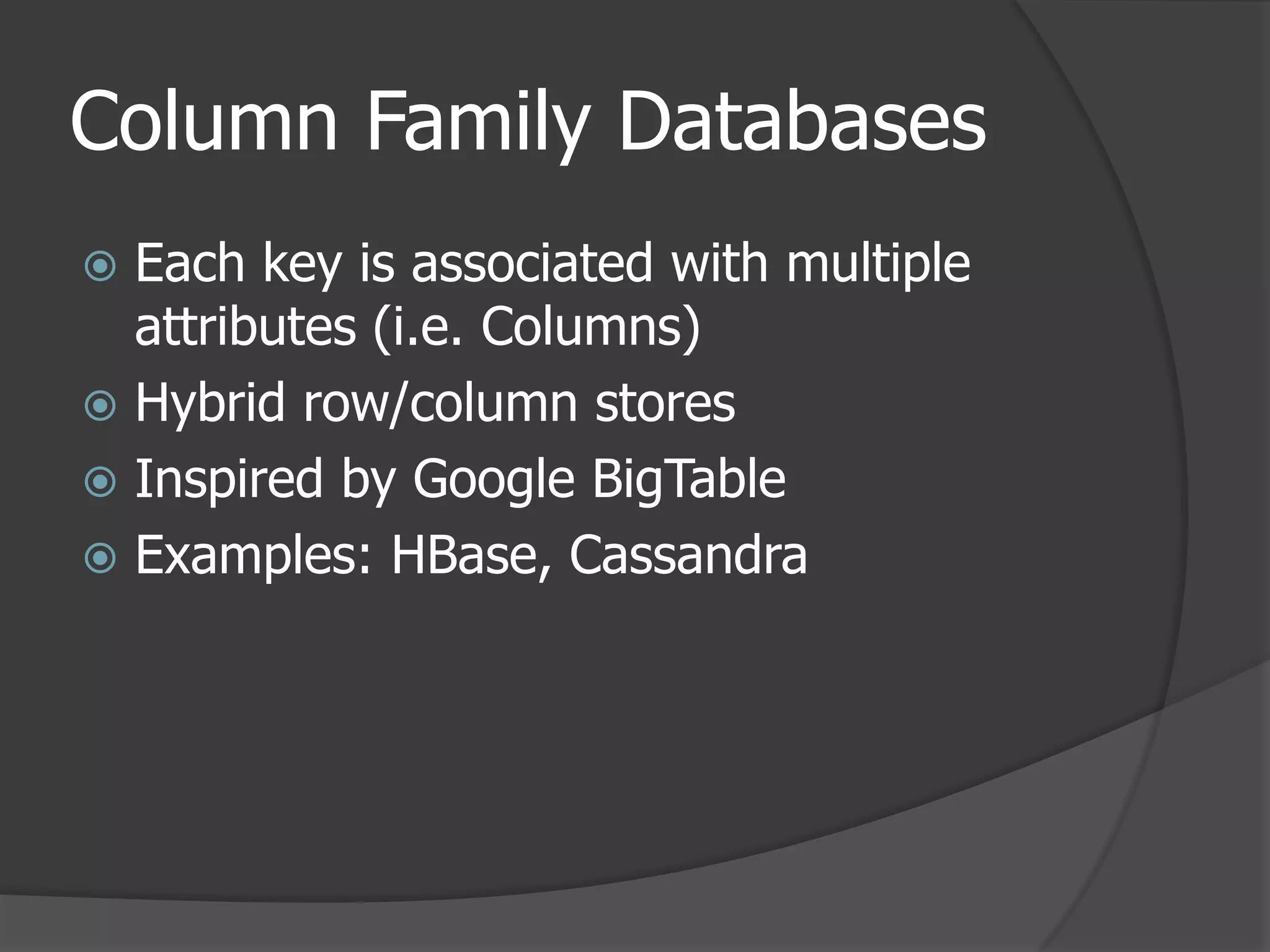
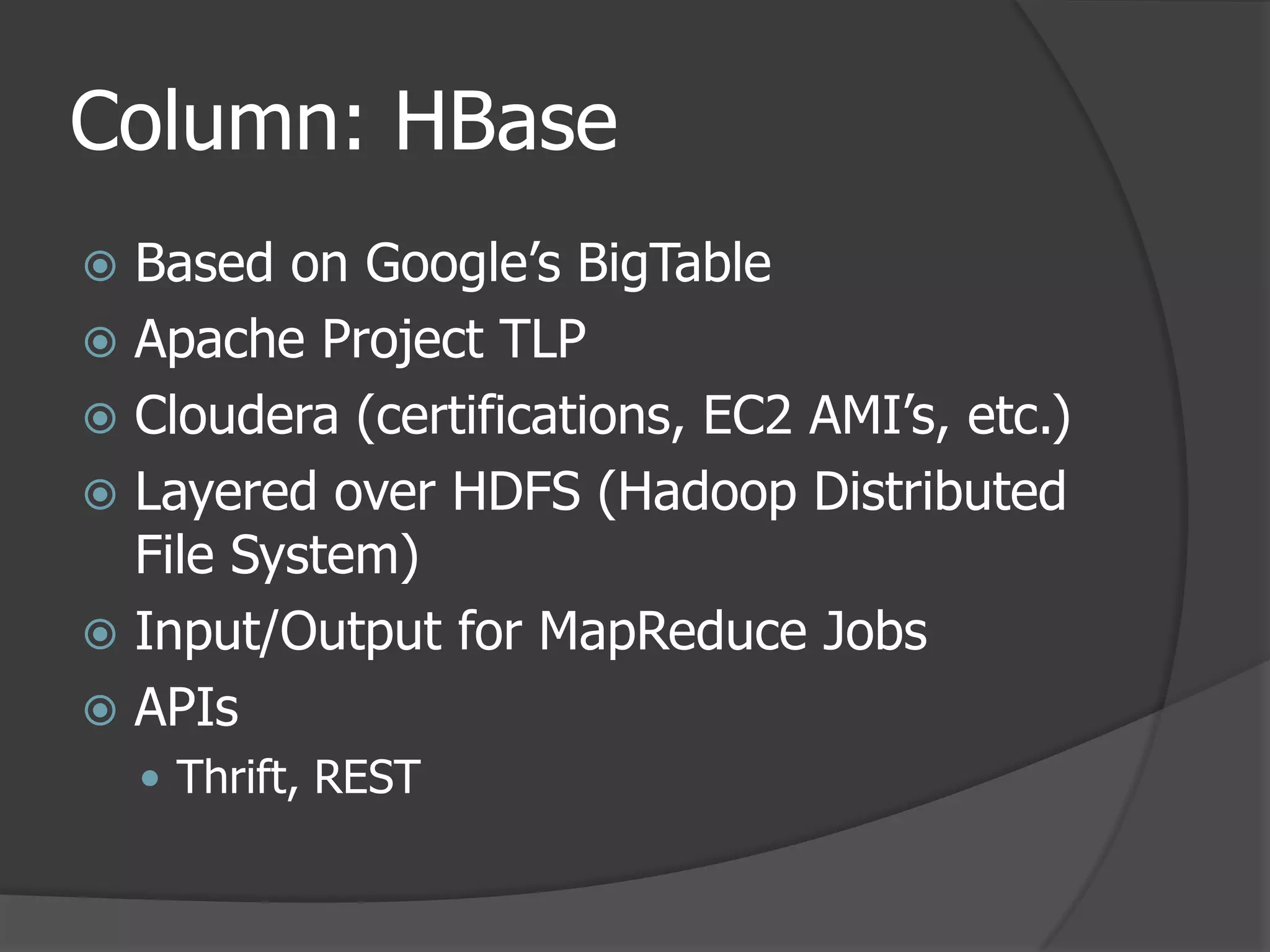
![Column: Hbase [cont’d]Automatic partitioningAutomatic re-balancing/re-partitioningFault tolerantHDFS Multiple ReplicasHighly distributed](https://image.slidesharecdn.com/introductiontonosqldatabases-100805013044-phpapp02/75/Introduction-to-NoSQL-Databases-18-2048.jpg)
![Column: Hbase [cont’d]Lars George](https://image.slidesharecdn.com/introductiontonosqldatabases-100805013044-phpapp02/75/Introduction-to-NoSQL-Databases-19-2048.jpg)
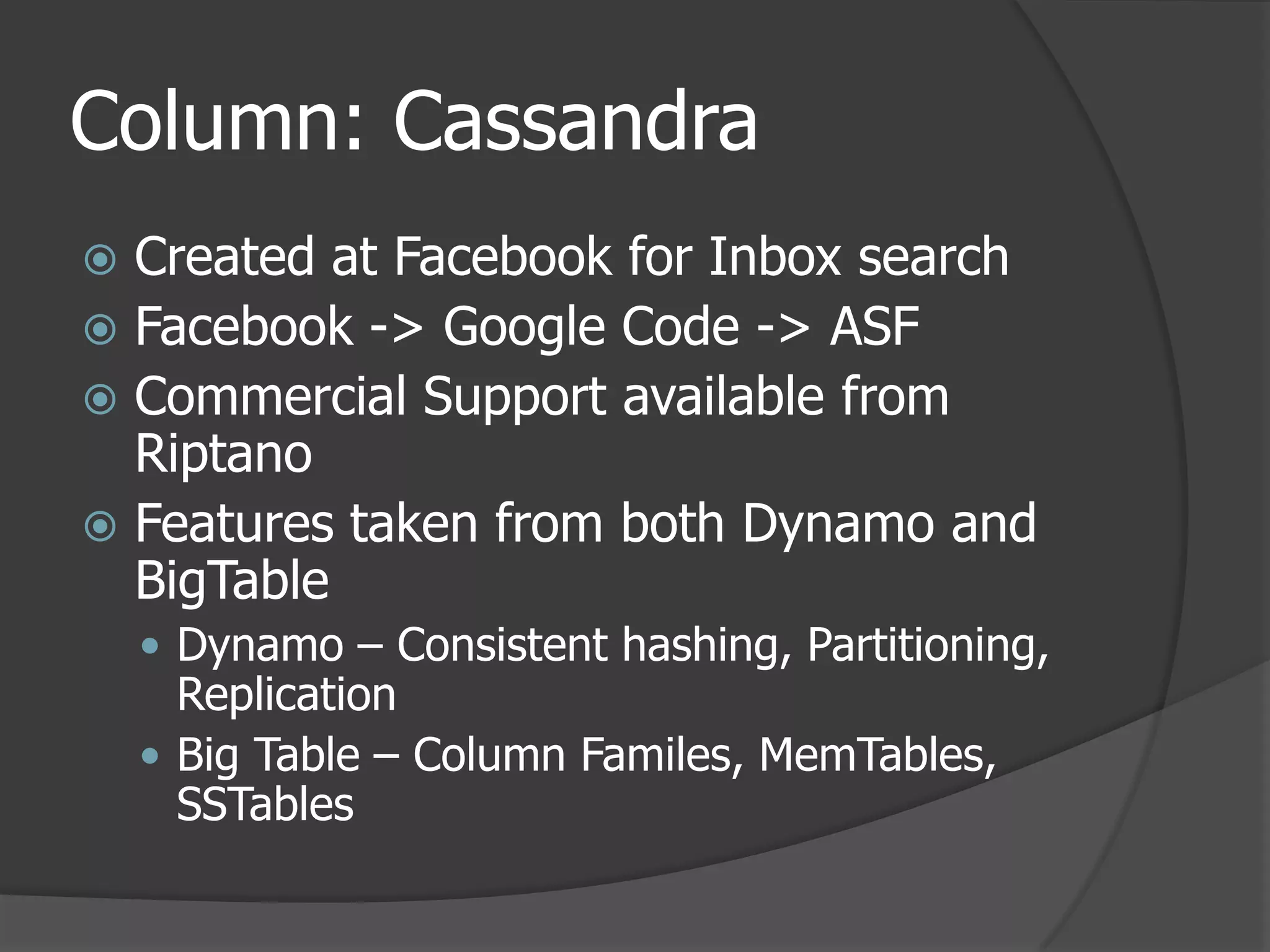
![Column: Cassandra [cont’d]Symmetric nodesNo single point of failureLinearly scalableEase of administrationFlexible/Automated ProvisioningFlexible Replica ReplacementHigh AvailabilityEventual ConsistencyHowever, consistency is tuneable](https://image.slidesharecdn.com/introductiontonosqldatabases-100805013044-phpapp02/75/Introduction-to-NoSQL-Databases-21-2048.jpg)
![Column: Cassandra [cont’d]PartitioningRandomGood distribution of data between nodesRange scans not possibleOrder PreservingCan lead to unbalanced nodesRange scans, Natural OrderCustomExtremely fast reads/writes (low latency)Thrift API](https://image.slidesharecdn.com/introductiontonosqldatabases-100805013044-phpapp02/75/Introduction-to-NoSQL-Databases-22-2048.jpg)
![Column: Cassandra [cont’d]ColumnBasic unit of storageColumn FamilyCollection of like recordsRecord level atomicityIndexedKeyspaceTop level namespaceUsually one per application](https://image.slidesharecdn.com/introductiontonosqldatabases-100805013044-phpapp02/75/Introduction-to-NoSQL-Databases-23-2048.jpg)
![Column: Cassandra [cont’d]Eric Evans](https://image.slidesharecdn.com/introductiontonosqldatabases-100805013044-phpapp02/75/Introduction-to-NoSQL-Databases-24-2048.jpg)
![Column: Cassandra [cont’d]Column DetailsNamebyte[]Queried againstDetermines sort orderValuebyte[]Opaque to CassandraTimestamplongConflict resolution (last write wins)](https://image.slidesharecdn.com/introductiontonosqldatabases-100805013044-phpapp02/75/Introduction-to-NoSQL-Databases-25-2048.jpg)
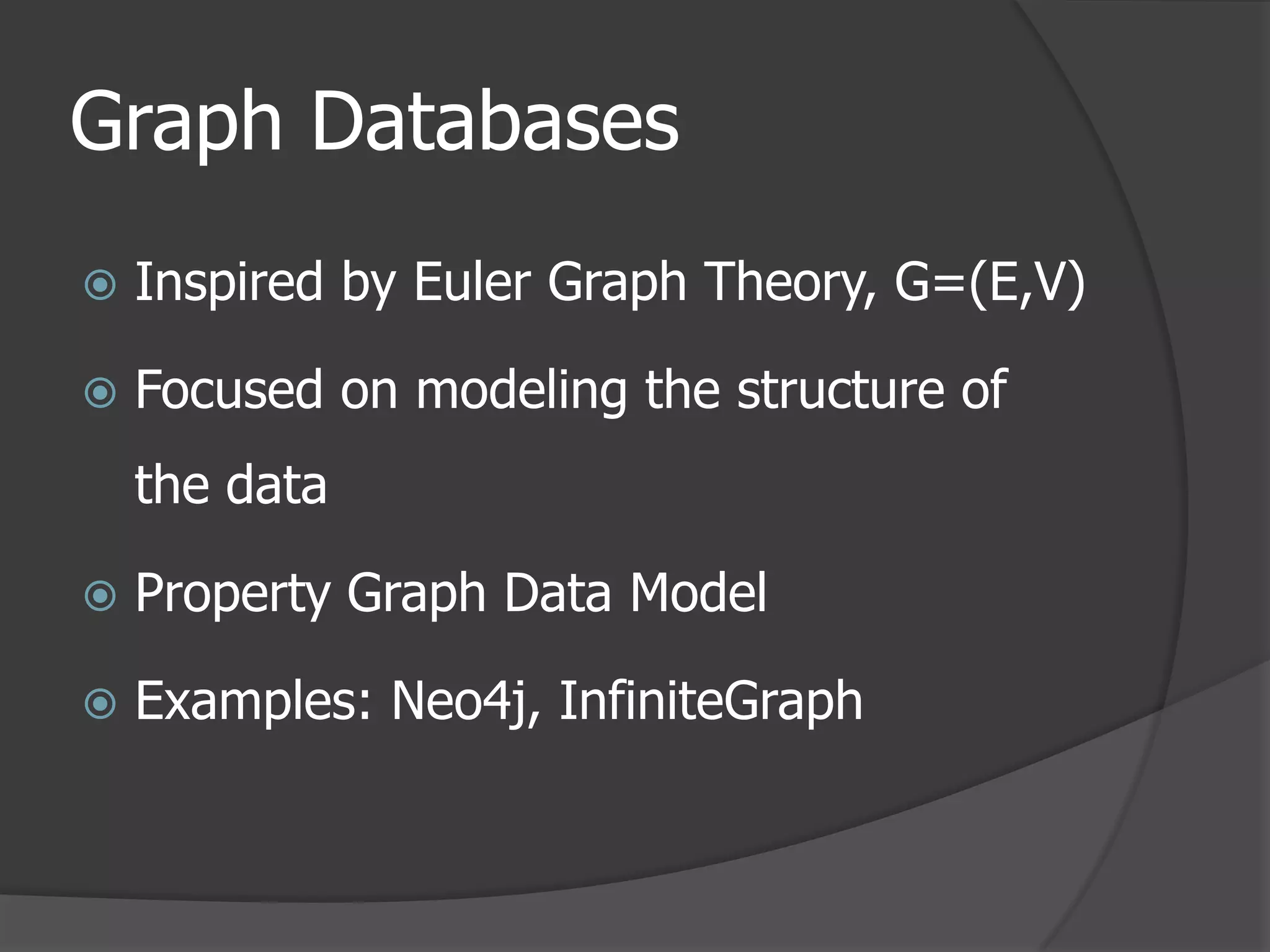
![Sample Property Graph[]Todd Hoff](https://image.slidesharecdn.com/introductiontonosqldatabases-100805013044-phpapp02/75/Introduction-to-NoSQL-Databases-27-2048.jpg)
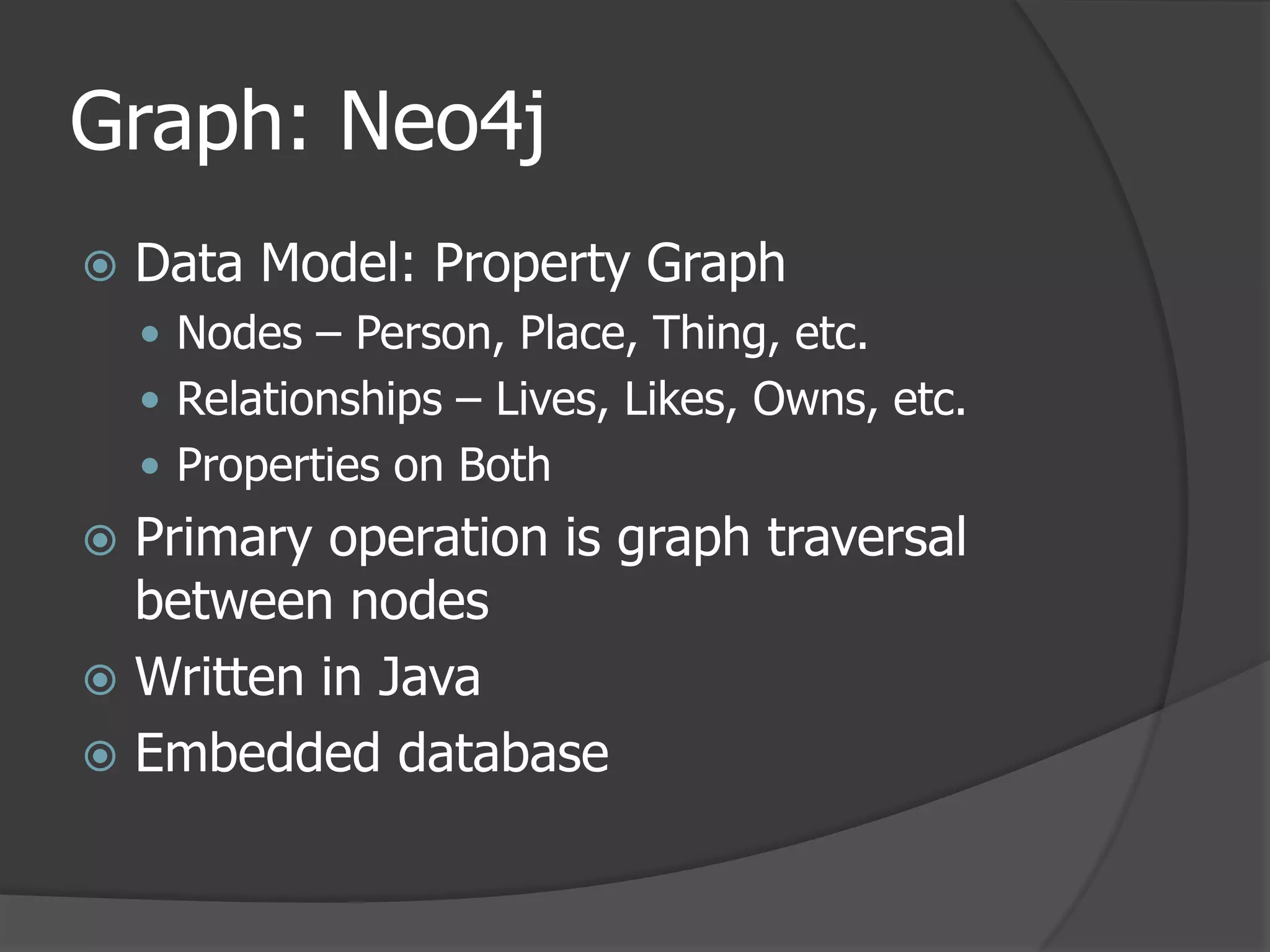
![Graph: Neo4j [cont’d]Disk-basedGraph stored in custom binary formatTransactionalJTA/JTS, XA, 2PC, MVCCScalesBillions of nodes/relationships/properties per JVMRobust6+ years in 24/7 production](https://image.slidesharecdn.com/introductiontonosqldatabases-100805013044-phpapp02/75/Introduction-to-NoSQL-Databases-29-2048.jpg)
![Graph: Neo4j [cont’d]Multiple language bindsJython, CpythonJruby (including RESTful API)ClojureScala (including RESTful API)UsesSocial Graph i.e. FacebookRecommendation EnginesFinancial Audit](https://image.slidesharecdn.com/introductiontonosqldatabases-100805013044-phpapp02/75/Introduction-to-NoSQL-Databases-30-2048.jpg)
![Graph: Neo4j [cont’d]Licensed under AGPLv3Dual Commercial License AvailableFirst server is freeSecond server InexpensiveCommercial support provided by Neo Technologies](https://image.slidesharecdn.com/introductiontonosqldatabases-100805013044-phpapp02/75/Introduction-to-NoSQL-Databases-31-2048.jpg)
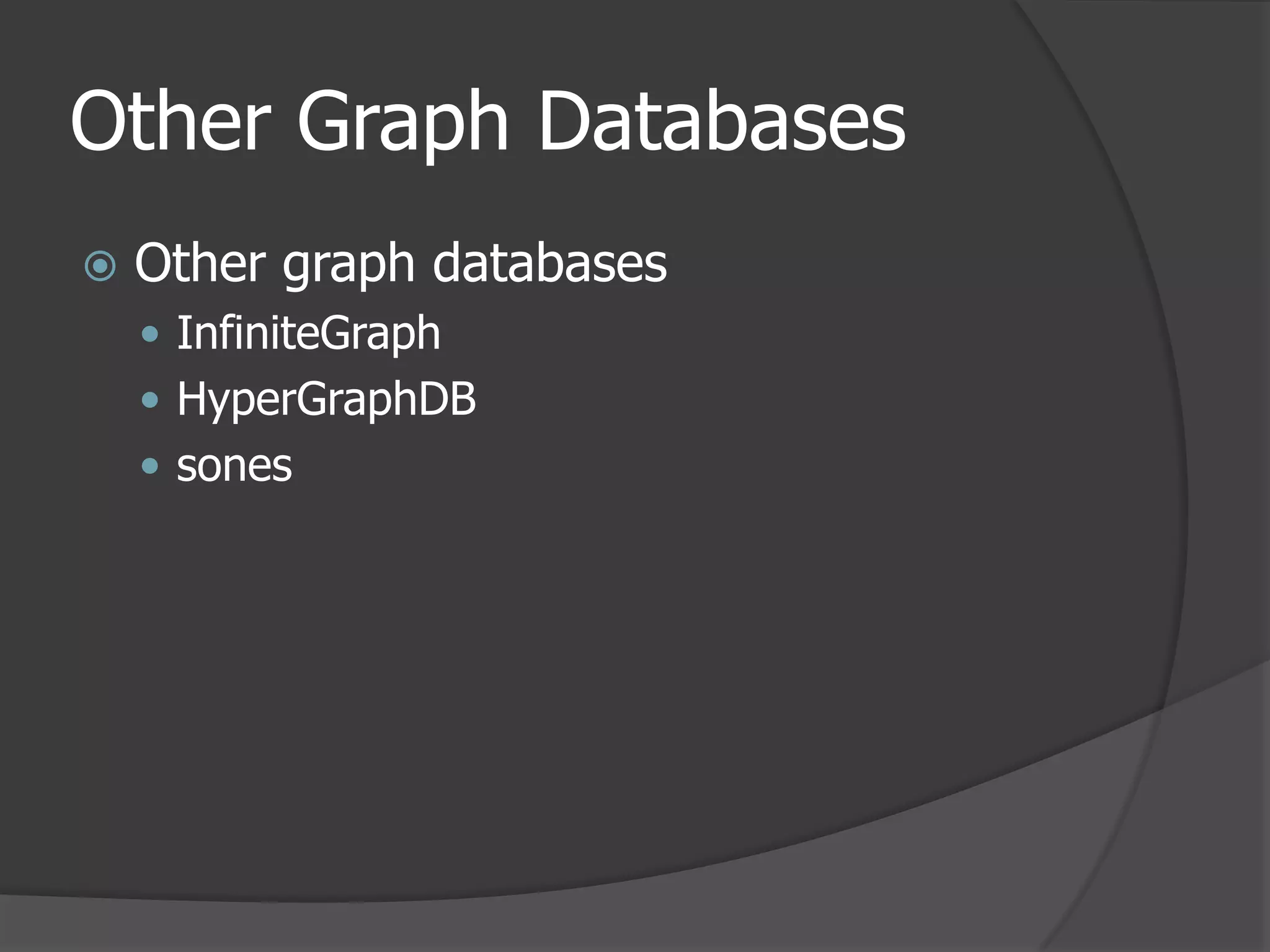


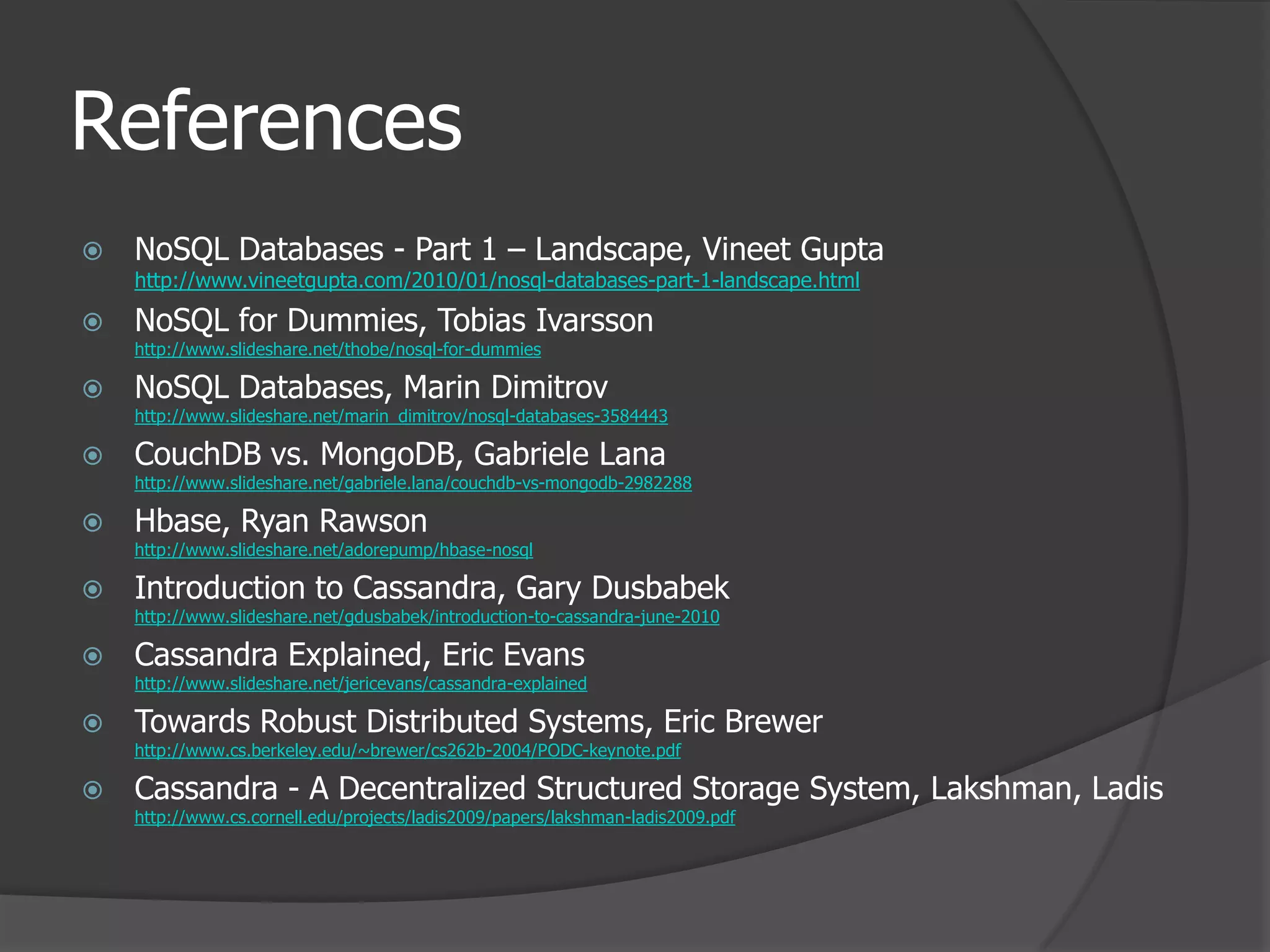
![References [cont’d]Bigtable: A Distributed Storage System for Structured Data, Google Inc.http://static.googleusercontent.com/external_content/untrusted_dlcp/labs.google.com/en/us/papers/bigtable-osdi06.pdfDynamo: Amazon’s Highly Available Key-value Store, Amazon Inc.http://s3.amazonaws.com/AllThingsDistributed/sosp/amazon-dynamo-sosp2007.pdfHBase Architecture 101 – Storage, Lars Georgehttp://www.larsgeorge.com/2009/10/hbase-architecture-101-storage.htmlBASE: An ACID Alternative, Dan Pritchett](https://image.slidesharecdn.com/introductiontonosqldatabases-100805013044-phpapp02/75/Introduction-to-NoSQL-Databases-36-2048.jpg)